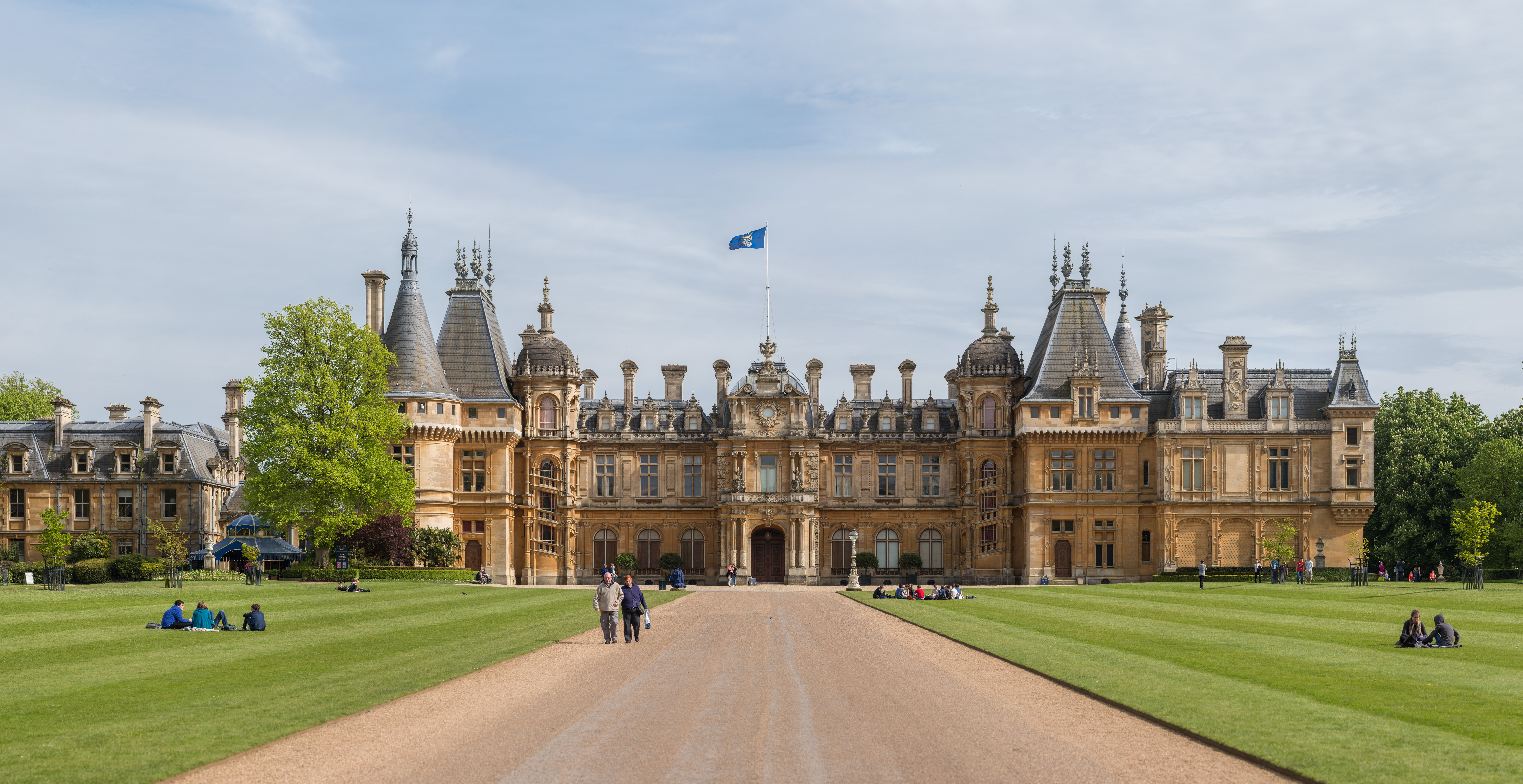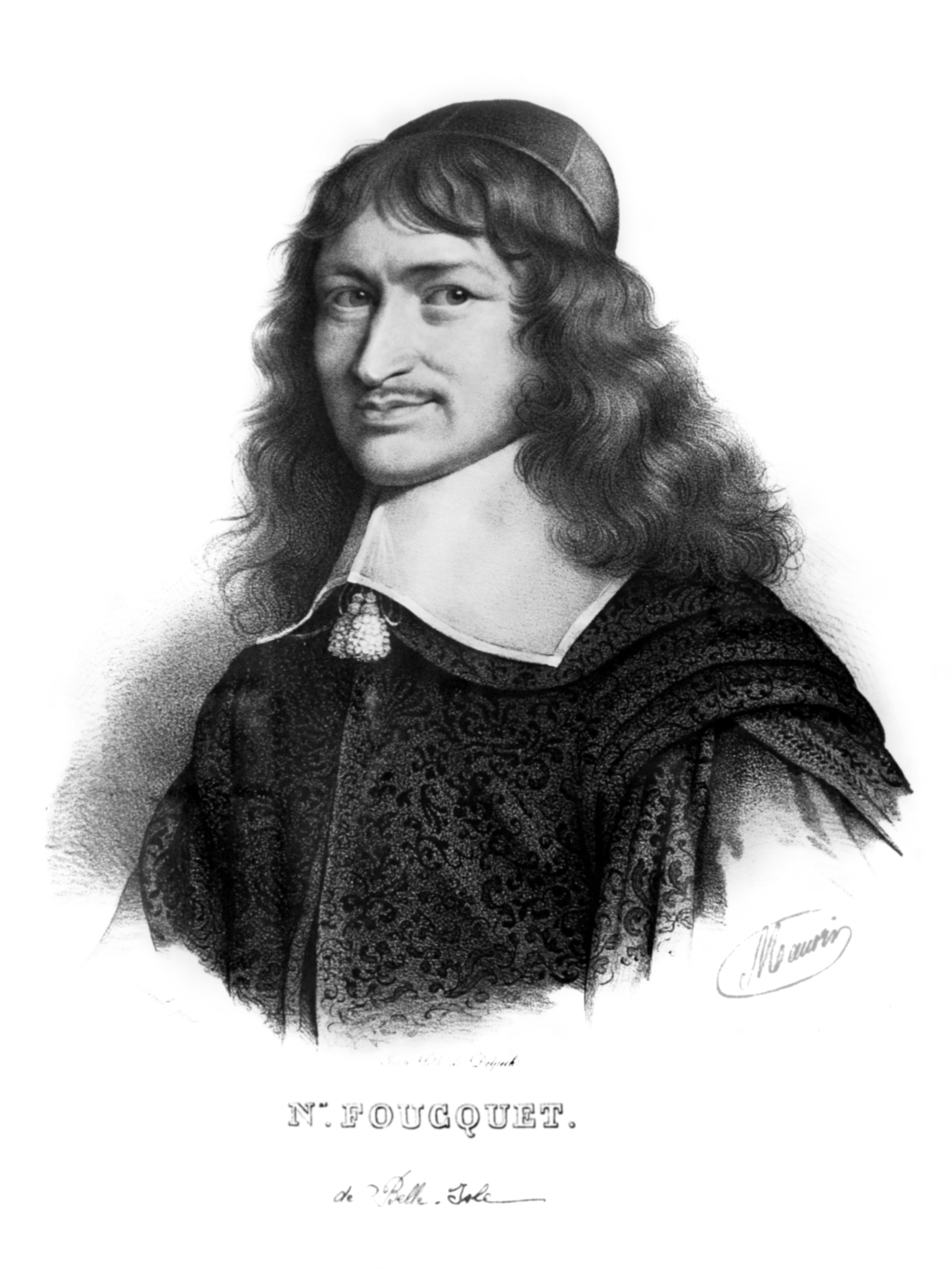|
Destailleur, Hippolyte
Hippolyte Destailleur (27 September 1822 – 17 November 1893) was a French architect, interior designer, and collector. He is noted for his designs and restoration work for great châteaux in France and in England, as well as his collection of books, prints, and drawings, covering French artists of the 18th and 19th centuries, much of which is now in the Cabinet des Estampes of the Bibliothèque Nationale, Paris (Destailleur Collection).Midant 1996.Middleton 1982. Early life and career Born Hippolyte-Alexandre-Gabriel-Walter Destailleur in Paris, he was the son of François-Hippolyte Destailleur (born Paris, 22 March 1787; died Paris, 15 February 1852), also a noted French architect, who studied with Charles Percier and became architect to the Ministère de la Justice in 1819. Hippolyte studied with François-René Leclère at the École des Beaux-Arts in Paris (1842–1846), after which he worked with his father and with Étienne-Hippolyte Godde. In 1853 he became the head ... [...More Info...] [...Related Items...] OR: [Wikipedia] [Google] [Baidu] |
Sketch Of Hippolyte Destailleur By Walter-André Destailleur - Pons 1996 P24
Sketch or Sketches may refer to: * Sketch (drawing), a rapidly executed freehand drawing that is not usually intended as a finished work Arts, entertainment and media * Sketch comedy, a series of short scenes or vignettes called sketches Film and television * ''Sketch'' (2007 film), a Malayalam film * ''Sketch'' (2018 film), a Tamil film * ''Sketch'' (TV series), a 2018 South Korean series * "Sketch", a 2008 episode of ''Skins'' ** Sketch (''Skins'' character) * Sketch with Kevin McDonald, a 2006 CBC television special Literature * Sketch story, or sketch, a very short piece of writing * ''Daily Sketch'', a British newspaper 1909–1971 * ''The Sketch'', a British illustrated weekly journal 1893–1959 Music * Sketch (music), an informal document prepared by a composer to assist in composition * The Sketches, a Pakistani Sufi folk rock band * ''Sketch'' (album), by Ex Norwegian, 2011 * ''Sketch'' (EP), by Hyomin, 2016 * ''Sketches'' (album), by Bert Jansch, 1990 * ... [...More Info...] [...Related Items...] OR: [Wikipedia] [Google] [Baidu] |
Palais Albert Rothschild
The Palais Albert Rothschild was a palatial residence in Vienna, Austria. It was one of five Palais Rothschild in the city that were owned by members of the Rothschild banking family of Austria, a branch of the international Rothschild family. It was located at Heugasse 26 (today Prinz-Eugen-Straße 20–22), in the 4th (Wieden) district of Vienna. Commissioned by Baron Albert von Rothschild, it was designed and built by the French architect Gabriel-Hippolyte Destailleur between 1876 and 1884, and demolished in 1954. Description The building was unusual for Vienna: designed in the French Neo-Renaissance “hôtel particulier” style, the layout was U-shaped, three storeys high and set back from the street by a courtyard, with the estate fenced off by a high iron grill. Apparently, as a child Baron Albert had lived in Salomon Mayer von Rothschild's house in 1848, which would explain the palace's seclusion from the public. Attached to the palace was a garden, which bordered on Pl ... [...More Info...] [...Related Items...] OR: [Wikipedia] [Google] [Baidu] |
Château De Trévarez
The Château de Trévarez is a stately home in the commune of Saint-Goazec in Finistère, in Brittany, France. The former manor house was built in the 16th century (the west part) and the 17th century (the east part). The present structure was commissioned by James de Kerjégu, Chairman of the General Council of Finistère, and built at the end of the 19th century by the French architect Walter-André Destailleur. Trévarez is one of the most recent châteaux built in France. Construction was completed around the beginning of the twentieth century. In 1941, the château was taken over by the German occupying forces. The castle was bombed on 30 July 1944 by the Royal Air Force. Location and style The château is located on a promontory overlooking the valley of Aulne, canalised as part of the Nantes-Brest Canal. Its architecture is a combination of traditional style and technological innovations. Protection The château is partly listed as a ''monument historique'' by the Fre ... [...More Info...] [...Related Items...] OR: [Wikipedia] [Google] [Baidu] |
Walter-André Destailleur
Walter-André Destailleur (born in Thais, Seine, 12 June 1867 – died March 1940) was a French architect, who designed and built the Château de Trévarez (1893–1907). He was the son of the architect Hippolyte Destailleur Hippolyte Destailleur (27 September 1822 – 17 November 1893) was a French architect, interior designer, and collector. He is noted for his designs and restoration work for great châteaux in France and in England, as well as his collection of b ....Midant 1996. References * Midant, Jean-Paul (1996). "Destailleur. French family of architects.", vol. 8, pp. 816–817, in ''The Dictionary of Art'', edited by Jane Turner, reprinted with minor corrections in 1998. New York: Grove. . 1867 births 1940 deaths People from Thiais École des Beaux-Arts alumni 19th-century French architects 20th-century French architects {{France-architect-stub ... [...More Info...] [...Related Items...] OR: [Wikipedia] [Google] [Baidu] |
Oise
Oise ( ; ; pcd, Oése) is a department in the north of France. It is named after the river Oise. Inhabitants of the department are called ''Oisiens'' () or ''Isariens'', after the Latin name for the river, Isara. It had a population of 829,419 in 2019.Populations légales 2019: 60 Oise INSEE History Oise is one of the original 83 departments created during the on March 4, 1790. It was created from part of the of |
Château De Vaux-le-Vicomte
The Château de Vaux-le-Vicomte (English: Palace of Vaux-le-Vicomte) is a Baroque French château located in Maincy, near Melun, southeast of Paris in the Seine-et-Marne department of Île-de-France. Built between 1658 and 1661 for Nicolas Fouquet, Marquis de Belle Île, Viscount of Melun and Vaux, the superintendent of finances of Louis XIV, the château was an influential work of architecture in mid-17th-century Europe. At Vaux-le-Vicomte, the architect Louis Le Vau, the landscape architect André Le Nôtre and the painter-decorator Charles Le Brun worked together on a large-scale project for the first time. Their collaboration marked the beginning of the Louis XIV style combining architecture, interior design and landscape design. The garden's pronounced visual axis is an example of this style. History Once a small château between the royal residences of Vincennes and Fontainebleau, the estate of Vaux-le-Vicomte was purchased in 1641 by Nicolas Fouquet, an ambitious 26-ye ... [...More Info...] [...Related Items...] OR: [Wikipedia] [Google] [Baidu] |
Château De Courances
The Château de Courances () at Courances, Essonne is a French château built in approximately 1630. The house and gardens are open to the public. House In 1552, Côme Clausse, a notary and royal secretary to the King, acquired from the Lapite family the former seigneurial dwelling at Courances, at the western edge of the Forest of Fontainebleau. His heir conveyed it in 1622 to Claude Gallard, another royal secretary, who is doubtless the builder of the present château, of an H-plan laid out on a rectangular platform that is surrounded by a moat. The original Louis XIII style château is known from the engravings of Israël Henriet and Israël Silvestre, about 1650. The evaluation of the property drawn up in 1638 mentions, apart from the manor house, four barns, a press house, two wheat mills, and two mills "straddling the river". "Above and beyond this is a mill called the fulling mill, with the forecourt of said chateau on one side, and the stream of the pond on the other", ... [...More Info...] [...Related Items...] OR: [Wikipedia] [Google] [Baidu] |
Farnborough, Hampshire
Farnborough is a town in northeast Hampshire, England, part of the borough of Rushmoor and the Farnborough/Aldershot Built-up Area. Farnborough was founded in Anglo-Saxons, Saxon times and is mentioned in the Domesday Book of 1086. The name is formed from ''Ferneberga'' which means "fern hill". According to the UK-wide 2011 Census, the population of Farnborough is 57,486. The town is probably best known for its association with aviation, with the Farnborough Airshow, Farnborough Airport, Royal Aircraft Establishment, and the Air Accidents Investigation Branch. History Farnborough is mentioned in the Domesday Book as part of the settlement of Crondall. Over the centuries, it was known as ''Ferneberga'' (11th century); ''Farnburghe'', ''Farenberg'' (13th century); ''Farnborowe'', ''Fremborough'', and ''Farneborough'' (16th century). Tower Hill Tower Hill, Cove: There is substantial evidence that many years ago a large accumulation of Sarsen stones existed upon what later came t ... [...More Info...] [...Related Items...] OR: [Wikipedia] [Google] [Baidu] |
St Michael's Abbey, Farnborough
Saint Michael's Abbey ( French: ''Abbaye Saint-Michel'') is a Benedictine abbey in Farnborough, Hampshire, England. The small community is known for its liturgy (which is sung in Latin and Gregorian chant), its pipe organ, and its liturgical publishing and printing. This abbey is also known for enshrining a Pontifically crowned image of Saint Joseph. Public tours of the abbey take place every Saturday at 3pm, with the visit comprising a tour of the church and a visit to the crypt. History Following the fall of the Second French Empire in 1870, Napoleon III (1808–1873), his wife Empress Eugénie (1826–1920) and their son the Prince Imperial (1856–1879) were exiled from France and took up residence in England at Camden Place in Chislehurst, Kent, where Napoleon III died in 1873. He was originally buried at St Mary's Roman Catholic Church in Chislehurst. Following the death of the Prince Imperial in 1879, the grief-stricken Empress Eugénie set about establis ... [...More Info...] [...Related Items...] OR: [Wikipedia] [Google] [Baidu] |
Baron Ferdinand De Rothschild
Baron Ferdinand de Rothschild (17 December 1839 – 17 December 1898), also known as Ferdinand James Anselm Freiherr von Rothschild, was a British Jewish banker, art collector and politician who was a member of the prominent Rothschild family of bankers. He identified as a Liberal, later Liberal Unionist, and sat as a Member of Parliament in the House of Commons from 1885 to 1898. Ferdinand had a younger sister, Alice, who like her brother was a keen horticulturalist and collector. She inherited Ferdinand's property, Waddesdon Manor, in 1898 after he died and likewise continued the tradition of using the house as a place to keep his impressive collections. Life and career Although Ferdinand de Rothschild was born in Paris in 1839, he was from Vienna and a member of the Rothschild banking family of Austria. He was the second son of the Viennese baron Anselm Salomon von Rothschild (1803–1874) and his English wife Charlotte Nathan Rothschild (1807–1859), daughter of Nathan M ... [...More Info...] [...Related Items...] OR: [Wikipedia] [Google] [Baidu] |






